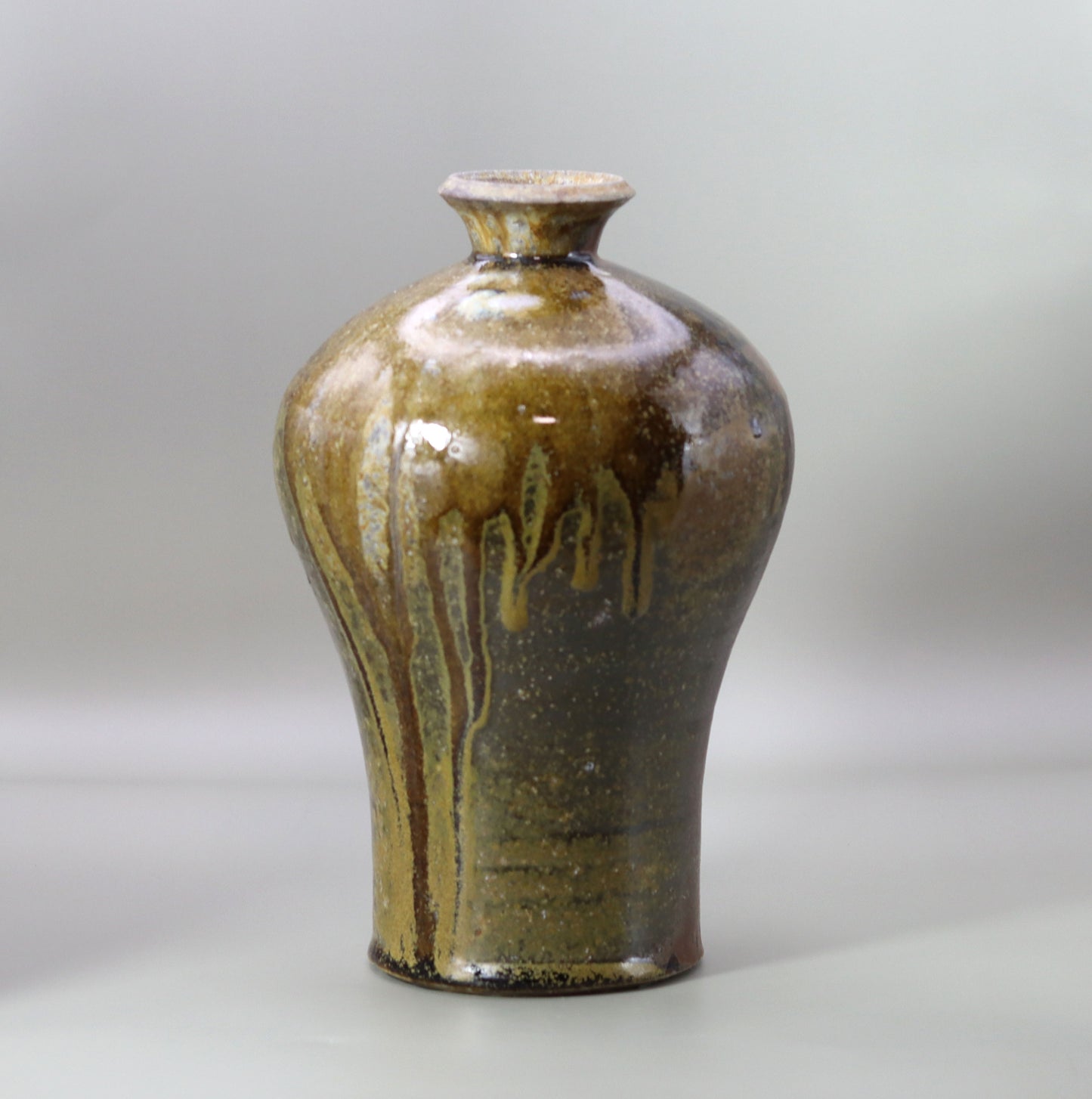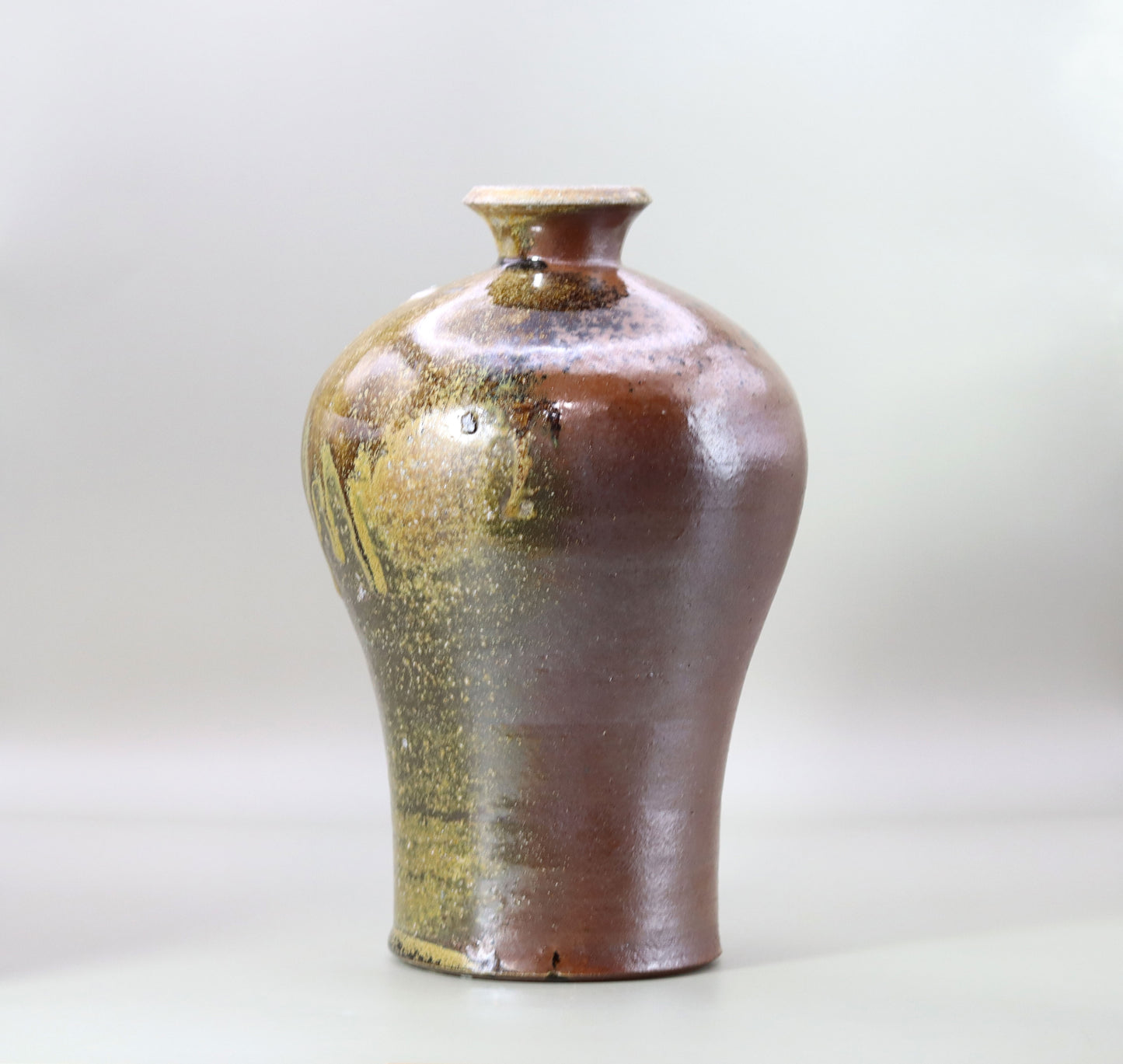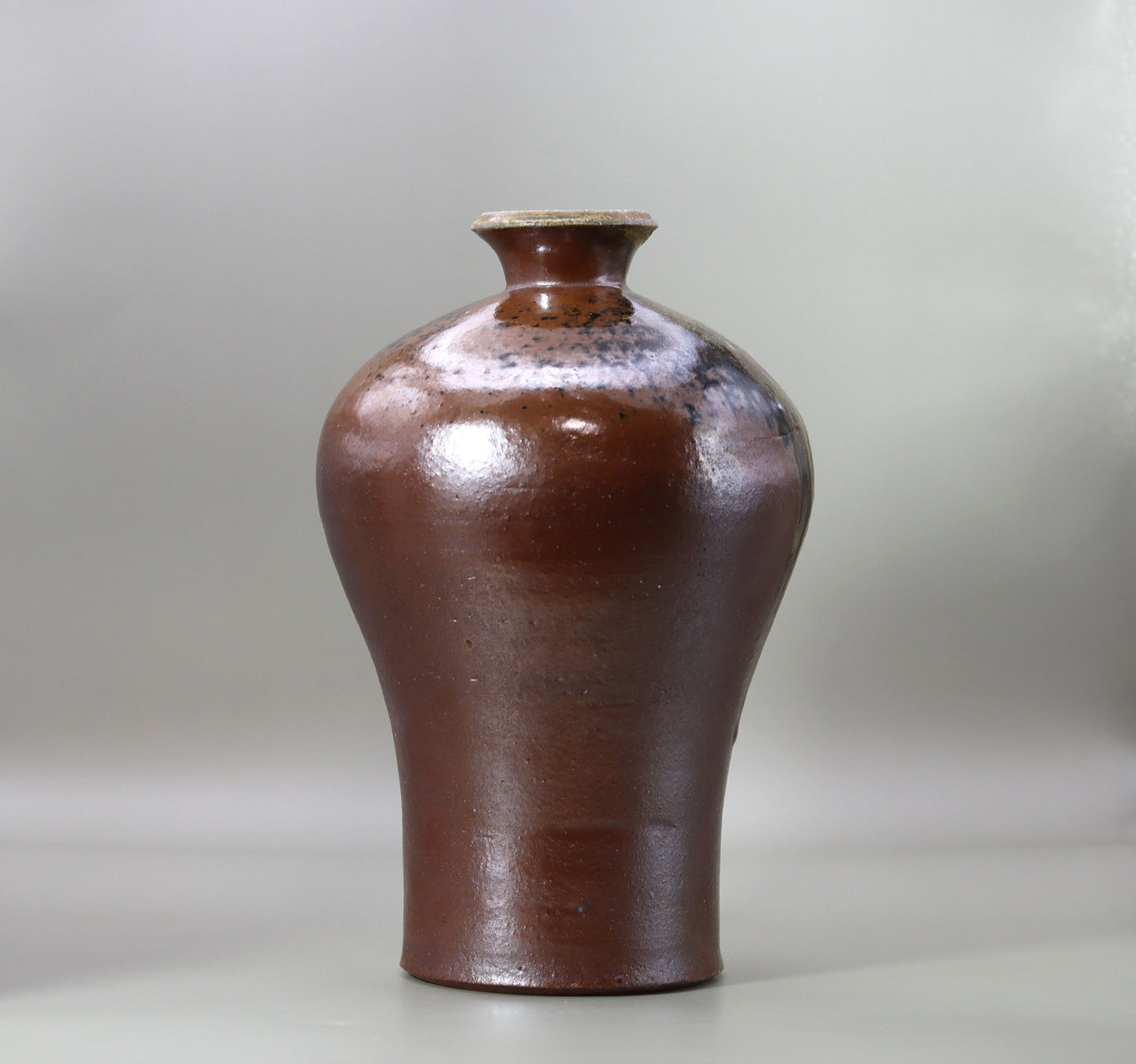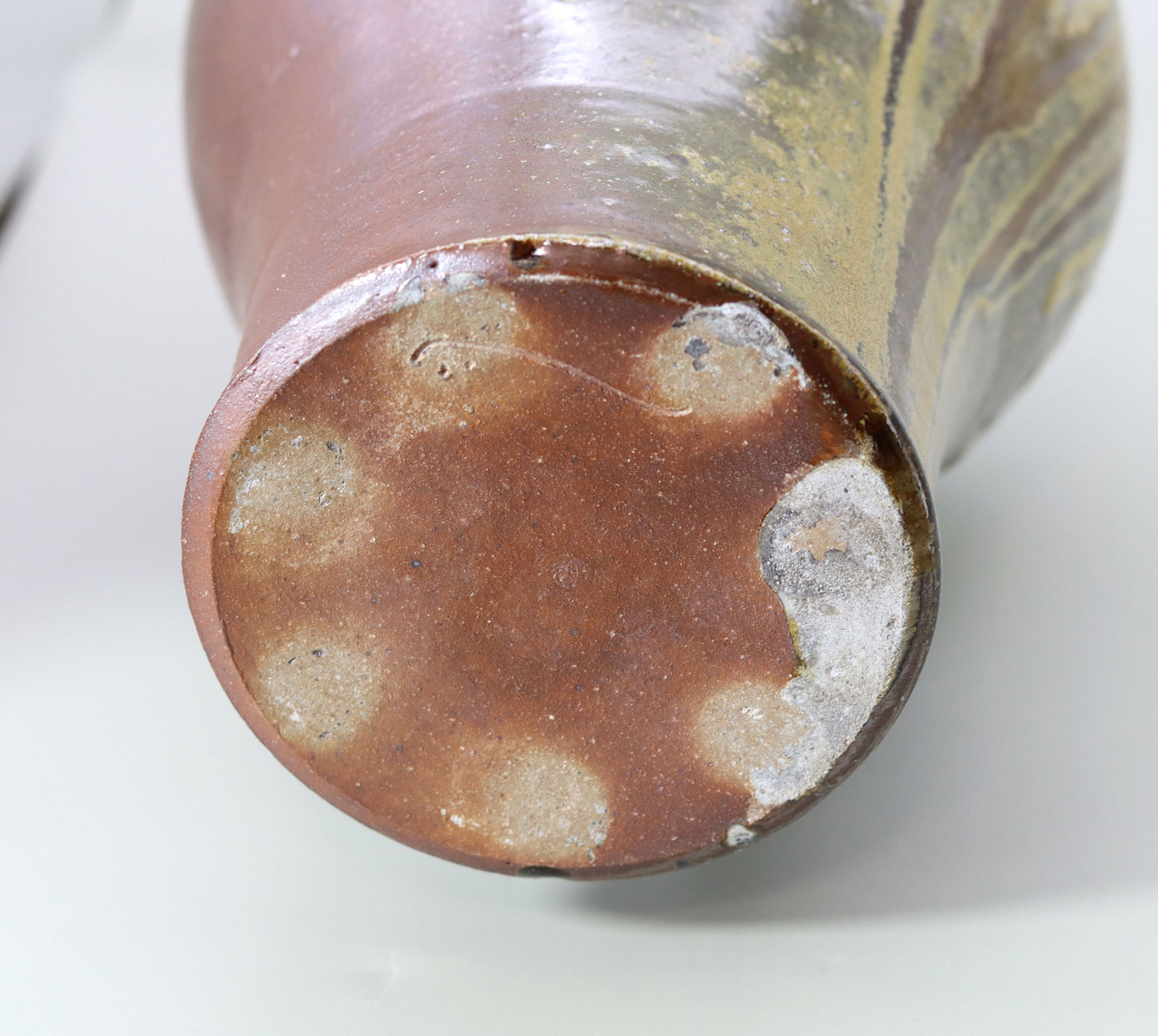ZEN Gorgeous Bottle Takeshi Shimizu
ZEN Gorgeous Bottle Takeshi Shimizu
Couldn't load pickup availability
Height: 14.2cm Width: 21.8cm
The tradition and deep charm of Tamba ware
"Tamba Bottle by Tsuyoshi Shimizu" is a work that inherits the tradition of Tamba ware. Tamba ware is counted as one of Japan's six ancient kilns, and is highly regarded for its deep history and techniques. This bottle, made by Tsuyoshi Shimizu, fully brings out the simple yet profound beauty of Tamba ware.
Unique texture created by anagama firing
This bottle was fired in a traditional anagama kiln. Anagama firing is a method of firing slowly over a long period of time, making the most of the power of nature. Shimizu Tsuyoshi uses this method to fire the bottle over a period of about two and a half days, at a high temperature of 1230°C. This gives the bottle a unique texture and depth.
Beautiful natural colors
Tamba bottles express the natural ash glaze and earthenware colors as they are. The natural color changes and kiln changes that occur during the firing process give the pieces even more charm and individuality. Thanks to Tsuyoshi Shimizu's skillful technique, these natural colors are beautifully harmonized, giving the entire piece depth and warmth.
The history and significance of the Heishi bottle
Bottles are vessels that have been deeply connected to Japanese culture since ancient times. Bottles, which are still used as offerings to the gods today, are mentioned in the Engishiki and trace their origins to the introduction of meibin, a sake bottle from the Song Dynasty in China. Bottles are made not only from porcelain but also from lacquerware, and the vermilion lacquered bottles made with Negoro lacquerware from the Kamakura to Muromachi periods are particularly famous. With this historical background, bottles have a special meaning as vessels that symbolize Japanese tradition and culture.
Craftsmanship and artistry
Tsuyoshi Shimizu has used his many years of experience and outstanding skills to create this Tamba bottle. It features a design that incorporates modern sensibilities while preserving traditional techniques. When you hold one in your hand, you will be impressed by its intricate craftsmanship and high-quality finish.
For tea ceremonies and everyday decoration
This Tamba bottle will make your tea ceremony even more special. It also makes a beautiful everyday decoration, bringing a special atmosphere to any space. Its simple yet striking design harmonizes with any scene, and you will be captivated by its beauty and functionality every time you use it.
Lasting Value
Tsuyoshi Shimizu's works retain their beauty over time. This Tamba bottle is also a masterpiece that can be used for a long time and will become a lifelong treasure. The more you use it, the more its texture will improve and you will gradually grow to love it more. It is a valuable piece that will continue to be loved by generations.
Be sure to keep a Tamba bottle made by Shimizu Tsuyoshi close at hand and enjoy its beauty and ease of use. This exquisite item will transform your everyday moments into something special.
Biography
Born in Tachikui, Hyogo Prefecture in 1975
1999 Graduated from Kyoto City University of Arts, Department of Crafts, majoring in ceramics. Studied under ceramic artists Masayuki Imai and Masamasa
2005 - Worked at the Museum of Ceramic Art, Hyogo (until 2012)
2010 - 2011 Part-time lecturer at Hyogo University of Teacher Education
2015: Visited Canada (Owata, Vancouver) through a Ministry of Foreign Affairs program
2019 Lecture at the Japan-Korea Academic Symposium (Gimhae Buncheong Ceramics Museum/Korea, '16)
Major Exhibitions/Open Call Exhibitions
2010 Biennale KUMAMOTO FINAL (Kumamoto Prefectural Museum of Art)
2012 Kyoto Prefectural Art and Craft New Artists Exhibition, Kyoto Art and Craft Biennale (Kyoto Museum of Art)
2013: Selected for the 22nd Japan Ceramic Art Exhibition ('11)
2014 Gwangju Biennale (Gwangju Folk Museum/South Korea)
2016 Exhibition of crafts from UCCN in the field of Crafts & Folk Art
(Icheon World Ceramic Center/Korea)
2017 Ischawan, One World: International Artists Chawan Ren Exhibition (Rudo Makoto/Taiwan)
2018 2018 TEA BOWL Exhibition of Gyeongsanam-Do (Gimhae Cultural Center/Korea)
150 Years of Hyogo Pottery - From Technique and Craftsmanship to Art and Individuality (The Museum of Ceramic Art, Hyogo)
2019 KOGEI Art Fair KANAZAWA 2019 (THE SHARE HOTELS KUMU Kanazawa)
2022: Selected for the 39th Tea Ceremony Art Exhibition (Tabe Museum of Art/Shimane) (6 times in total)
2023 Selected for the 10th Kikuchi Biennale (Kikuchi Kanmi Memorial Museum Tomo/Tokyo)
Awards
2010 Contemporary Ceramic Art Hagi Grand Prize Exhibition 2010 (Yamaguchi Prefectural Hagi Museum of Art, Urakami Memorial Museum) Honorable Mention
2011: Honorable Mention at the 57th All-Kansai Art Exhibition (Osaka Municipal Museum of Art) (2009: Same award)
Kobe Biennale 2011 Contemporary Ceramic Art Exhibition Encouragement Award (same award in 2009)
2017 Hyogo Prefecture Art Encouragement Award
2018: Excellence Award at the 11th Contemporary Tea Ceremony Exhibition, Gold Award at the 23rd Mino Tea Bowl Exhibition
2019 12th Contemporary Tea Ceramics Exhibition Excellence Award 5th Geibunkyo Exhibition Kyoto City Mayor Award
2023 15th Contemporary Tea Ceramics Exhibition Excellence Award
Share







Multi-Column
-
[I will send it to you quickly and carefully]
We carefully package each product in a way that suits it best.
Also, delivery times vary depending on the piece (vessel, etc.).
Items that already come with a box will be shipped within 1-3 days of the order date.
For items that require a box to be made after your order, it will take approximately 30 days for production to be completed and then shipped.
In either case, once we have confirmed your order, we will contact you by email to inform you of the delivery date.
-
[Requests when purchasing pottery]
Even products that look the same may differ slightly in color, shape, size, etc.
The way the glaze is used, the power of the kiln, the firing method, the season, and the humidity also affect the appearance of the pottery.
Please understand the individuality of each piece of pottery and enjoy the unique warmth of handmade.







